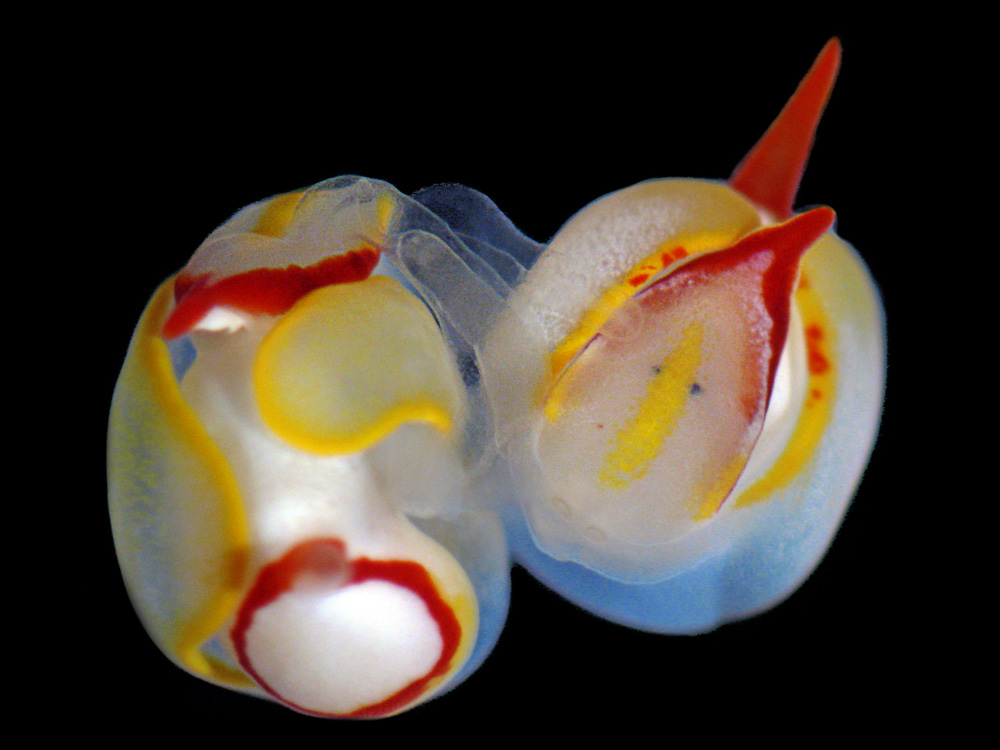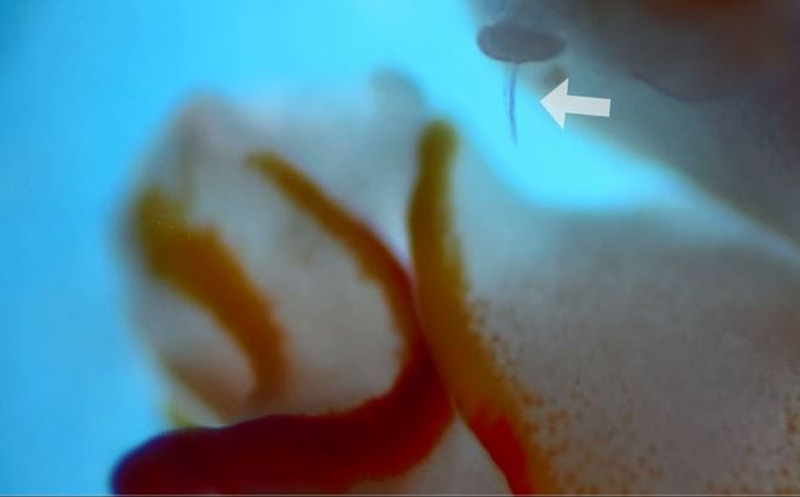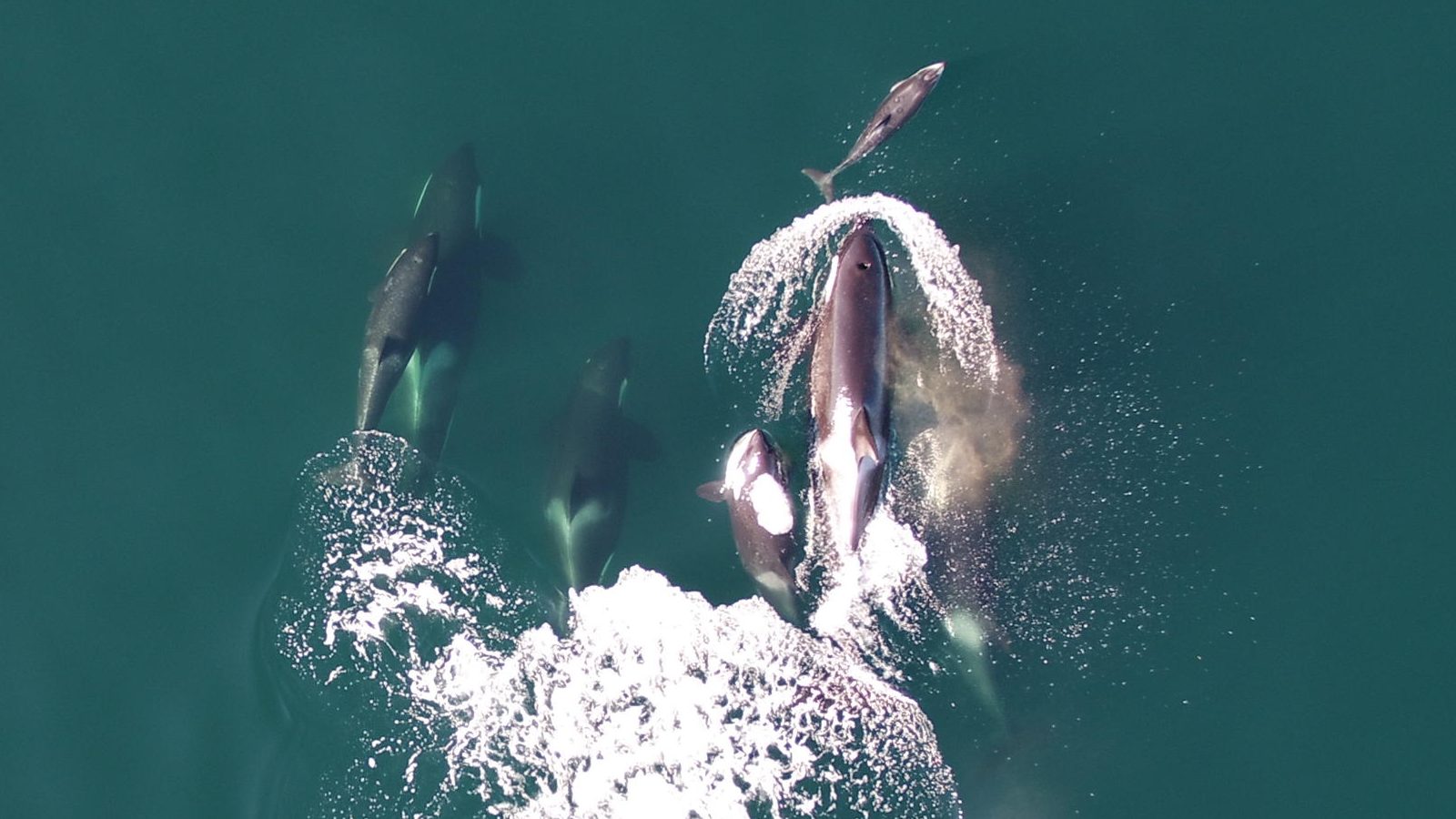Ouch! Hermaphrodite Sea Slug Stabs Mate in Head During Sex

Cats may bite, and geese may have barbed penises, but one newly described hermaphroditic sea slug has taken violent animal sex to a new level by stabbing its mates in the head.
The perpetrator of this bizarre act, Siphopteron sp. 1, is a small sea slug found off the northeast coast of Australia. A simultaneous hermaphrodite, it has both male and female reproductive organs that it uses simultaneously during sex.
For its male organ, the slug has a two-pronged penis consisting of a penile bulb that transfers sperm, and a separate, needlelike appendage called a penile stylet that stabs and injects partners with prostate fluid-containing sex hormones called allohormones.
This stabbing behavior, known as traumatic secretion transfer, is fairly common amongst hermaphroditic sea slugs, and does not actually traumatize the slug — the term trauma refers to the Greek translation as "wound." The behavior is well documented, but still not very well understood. It is thought to help individuals increase reproductive success by either inhibiting fertilization by others or increasing fertilization by their own sperm, but this remains unclear.
Researchers have also noted that different species, and even members within the same species, stab mates in different regions of the body, raising the question of how these individuals decide where to aim their shots. [See Images of Hermaphroditic Sea Slugs Having 'Head Sex']
To investigate this question, researchers based at the University of Tuebingen in Germany studied the mating rituals of five hermaphroditic slug species, including Siphopteron sp. 1 and four of its close relatives. The scientists found that three of the five species placed their stylets fairly randomly on their mates' bodies, seemingly "choosing" a location based on logistical convenience rather than for any intended outcome. Members of a fourth species consistently placed their stylets close to their partners' female genitalia, presumably to remain close to the reproductive action.
But Siphopteron sp. 1 was the only of its relatives that consistently stabbed its partner between the eyes. This is the first known instance of such reproductive head-butting in the animal world, the team reports today (Nov. 12) in the Proceedings of the Royal Society B.
Get the world’s most fascinating discoveries delivered straight to your inbox.
"No one has ever described that before," study co-author Rolanda Lange, who now works as a postdoctoral researcher at Monash University in Melbourne, Australia, told LiveScience. "If you see two animals injecting fluids into each other's heads during mating, that's just weird. Even if you work in this area, it's just weird."
The slugs stab each other in the head several minutes after penetrating each other with their penile bulbs, and remain stabbed and pumping prostate fluid into each other's circulatory systems for the majority of their 40-minute mating period, the researchers report.
The team has not determined why the slugs target the region between their mate's eyes, but they speculate the creatures might use allohormonesto manipulate some aspect of their mate's nervous system, which is centered directly behind the eyes.
Joris Koene, a biologist at VU University Amsterdam who was not involved in this research but has studied similar stabbing behavior in other hermaphroditic animals, such as earthworms, thinks it's possible that the slugs are targeting their mates' nervous systems, but is not yet convinced this is the case.
"Wherever you inject something through the [slug's] skin, you end up in the body cavity where the blood circulates," Koene told LiveScience. "It might be targeting something just underneath there [behind the eyes], but I think it's hard to directly make that link based on what they have now."
The team acknowledges that this hypothesis is speculative, and next hopes to test the idea by isolating prostate fluid and experimentally injecting it into individuals to assess the fluid's role in reproductive success, Lange said.
Follow Laura Poppick on Twitter. Follow LiveScience on Twitter, Facebook and Google+. Original article on LiveScience.




